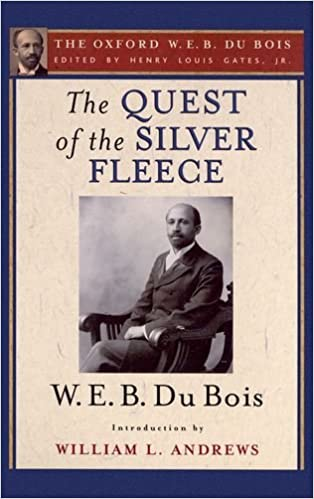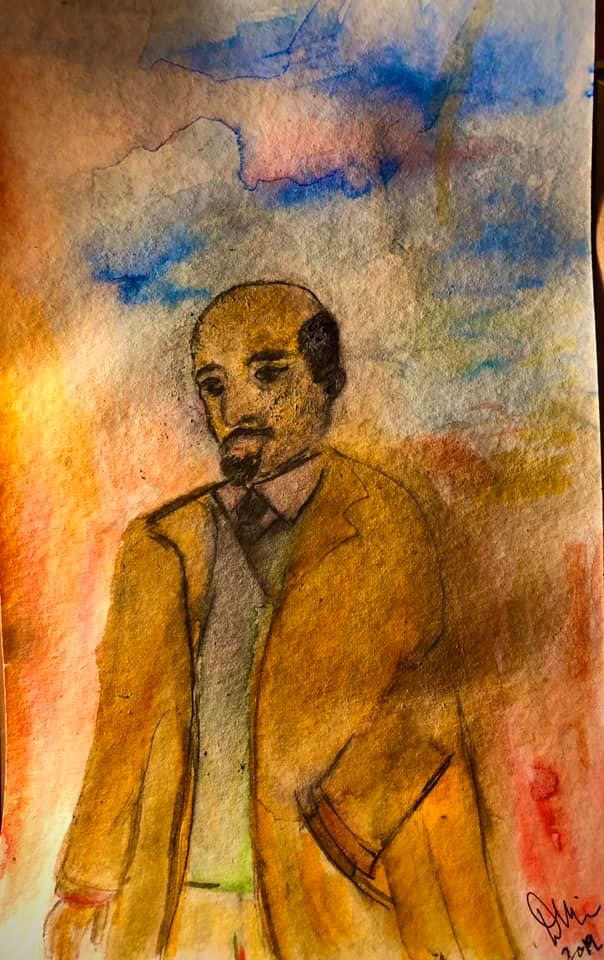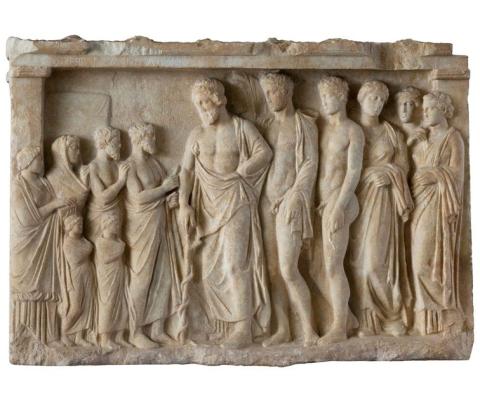Nina Papathanasopoulou
June 24, 2021
The Ancient Worlds, Modern Communities initiative (AnWoMoCo), launched by the SCS in 2019 as the Classics Everywhere initiative, supports projects that seek to engage broader publics — individuals, groups, and communities — in critical discussion of and creative expression related to the ancient Mediterranean, the global reception of Greek and Roman culture, and the history of teaching and scholarship in the field of classical studies. As part of this initiative, the SCS has funded 111 projects, ranging from school programming to reading groups, prison programs, public talks and conferences, digital projects, and collaborations with artists in theater, opera, music, dance, and the visual arts. The initiative welcomes applications from all over the world. To date, it has funded projects in 25 states and 10 countries, including Canada, U.K., Italy, Greece, Belgium, Ghana, Puerto Rico, Argentina, and India.
This post focuses on three projects that combine the study of Classics with the fields of medicine, sociology, comparative literature, and philosophy. It centers on the efforts of three individuals — an assistant professor, a recent Ph.D. graduate, and an undergraduate student — to engage local and targeted communities in the study of the ancient world and its reception. The first project aims to develop a critical understanding of the relationship of ancient Greek medicine to modern medicine; the second project brings together community members in Philadelphia to explore the work of W. E. B. Du Bois and his relationship to the Greeks and Romans; while the third project uses ancient Greek literature as an entryway into philosophical inquiry for children in India.
Ancient and modern medicine
Colin Webster, Assistant Professor of Classics at UC Davis, and Jessica Wright, both executive members of the Society for Ancient Medicine, are spearheading a new project called The Rootcutter. Supported by AnWoMoCo, The Rootcutter will provide open-access resources highlighted by a blog series. Through this blog, they are striving to bring nuanced accounts of ancient healing practices to healthcare professionals and medical students, while also turning the attention of more classical studies students to the history of medicine.

Figure 1. The Rootcutter’s Logo.
Like the rootcutters (rhizotomoi) of fifth-century Greece, the blog series has two aspirations. First, it aims “to get to the root of things” by drawing upon what is useful from traditions of the past to examine, work with, and perhaps even cut free from them. Second, the blog will serve as an intermediary between scholars working on historical aspects of medicine and those dealing with its practical applications. Ancient rootcutters also functioned as intermediaries, bridging the work of doctors, pharmacologists, and magic-religious healers. Webster, who specializes in the history of technology and the body and teaches on medicine, healing, and health trends in Greco-Roman antiquity, explains:
Rootcutters were independent drug makers who collected and produced pharmaceuticals. They were not elite practitioners and were not generally engaged in the literary exposition of medicine. Yet botanists like Theophrastus and pharmacologists like Dioscorides clearly spoke with them and drew on their expertise and experiences. The Rootcutter is similarly positioned outside academic publications but can hopefully supply useful observations that cross cultural and professional boundaries.
The Rootcutter aspires to be a useful tool for connecting aspects of ancient medicine with modern medical practice. According to Webster,
Medicine sits at a unique site for interaction between ancient and modern worlds. On the one hand, people habitually point to modern medical advancements as a guarantor of human progress. On the other hand, I personally never feel as close to ancient actors as when I’m reading about Hippocratic or Hellenistic physicians trying to decide what constitutes a relevant medical symptom and when more attention to our bodies just isn’t useful. Medicine allows us to know that our world is very different from antiquity and also simultaneously shows us the flimsiness of this conceit. We plan to use the dual role that healing plays to make the ancient world more vivid and intertwined with our own corporeal experiences.
Contributions for The Rootcutter are being solicited from both scholars of ancient medicine and healthcare professionals on topics including, but not limited to, disability, race, trauma, military medicine, and epidemics. One article, for example, will focus on the way ancient practices can mirror modern medicine and help contextualize various approaches to uncertainty and danger. After taking a course on ancient medicine, one of Webster’s former students noticed resonances between how Hippocratic physicians tracked the trajectory of an illness and her own careful daily documentation of patients’ COVID-19 symptoms as she worked in an emergency room during the pandemic. It gave her insight into what prognosis can do for our sense of control in the face of chaos. Interested contributors are invited to submit pitches here by July 30 for full consideration. Posts will start to be published in August.
W. E. B. Du Bois
Turning her focus to the art and literature of the ancients, and also to the work of W. E. B. Du Bois, Divya Nair, who recently finished her Ph.D. at the Department of English at the University of Pennsylvania, has developed two virtual, month-long reading groups scheduled to take place in July and August, both focused on the work of Du Bois and his interest in the ancient world. Organized in partnership with the Free Library of Philadelphia and Susan Conway, Supervisor of their Literature Department, the first reading group is geared towards adults and focuses on Du Bois’s 1911 novel, The Quest of the Silver Fleece. The novel deals with the love, loss, and metamorphosis of two black characters in the Jim Crow South, drawing on the myth of Medea and Jason. The second is an arts-based workshop on Du Bois’s poetry titled “I am the Smoke-King.” This workshop is directed at teenagers and young adults, who will be encouraged to create their own artwork and poetry as a result of their engagement with Du Bois’ work.
Nair was excited to discover Du Bois during her graduate work, where she studied the reception of Virgil’s Georgics in the poetry of Dryden and Milton, the literary genre of romance in texts such as Heliodorus’ Aithiopica and Apuleius’ Golden Ass, and the changing representations of Greeks, Europeans, Africans, and Easterners in literary utopias from Thomas More to the 18th century. Nair was particularly interested in examining how new economic developments and the emergence of slave trade and colonialism shaped peoples’ values and ideals. She also found inspiration in Du Bois’s 1946 book The World and Africa, which reflects on the role of Africa in human history from antiquity to his time, and in his pioneering sociological study, The Philadelphia Negro, which examines the Black, working-class neighborhood of the Seventh Ward (now South Philly) in the late 19th century.
Deciding she wanted to engage with the Philadelphia community and explore Du Bois further by learning from their perspectives on his work, Nair received funding from the SCS’s AnWoMoCo initiative to organize the two reading groups. Du Bois’ novel and his use of myth and allegory provides ample material for discussions on education and social injustice, which are some of the topics Nair is eager to delve into. The novel’s opening lines, quoted below, are particularly meaningful for Nair, and she hopes they will inspire the participants in the reading group:
He who would tell a tale must look toward three ideals: to tell it well, to tell it beautifully, and to tell the truth. The first is the Gift of God, the second is the Vision of Genius, but the third is the Reward of Honesty. In The Quest of the Silver Fleece there is little, I ween, divine or ingenious; but, at least, I have been honest.

Figure 2. The cover of Du Bois's The Quest of the Silver Fleece.
For the poetry group, Nair is selecting poems that examine antiquity and history more broadly, and she plans to take the group to visit the Greek, Roman, and Egyptian collection at the Philadelphia Museum of Art to see what connections can emerge. Funding from the AnWoMoCo initiative will be used to provide the novels and poetry materials for free to all participants and to purchase tickets for those participating in the art and poetry workshop for the Philadelphia Museum of Art.
Nair says:
My hope is to reach the students and youth of Philadelphia in a time when public education is in a state of crisis here, given the present pandemic. Through the Du Boisian interpretation of the Classics, I aim to highlight the importance of the art and literature of the ancient world, in which Du Bois found so much inspiration and hope for his scholarship and art, to interested audiences, though particularly those who have not had a chance to enjoy the Classics due to hardship, economic or otherwise.

Figure 3. A portrait of Du Bois created by Divya Nair in 2019 and used with the creator’s permission.
Greek literature and philosophical inquiry in India
Apoorwa Sinha, a first-year undergraduate student at the University of Delhi in India, is also interested in exploring her passions in philosophy and ancient literature through engagement with her local community. Sinha had no training in Classics during her secondary education and is the first in her family to pursue a college degree in the humanities. She found such inspiration in reading Homer’s Iliad for the first time in a philosophy class last semester that she decided to nurture and diffuse her enthusiasm by creating a classics and philosophy program for children in her community ages 7–12. According to Sinha, “Philosophy is not a popular academic discipline in India: it is stereotyped as an impractical discipline and doesn’t occupy an essential place in the school curriculum.” The Iliad, she thinks, is a perfect starting point to foster children’s curiosity and to introduce them to philosophy and philosophical inquiry.
With funding from AnWoMoCo to purchase books and online material for the program’s participants, to publicize the program, to create a Classics library, and to invite guest lecturers, Sinha started in April a weekend program on Zoom for approximately 15 children in her community. Together, they read and discuss several aspects of the Iliad and the philosophical issues it raises, including the causes and consequences of war; the moral implications of people’s actions; the role of the gods; and the values that bind humans together. To make the Greek stories more relatable, Sinha also draws comparisons to the Hindu epics Ramayana and Mahabharata, with which the children are more familiar: Athena is studied in parallel with Saraswati, the Hindu goddess of knowledge and wisdom, Apollo next to the sun god Surya, Achilles next to the demi-god warrior Bhishma, and Helen alongside Sita, a royal queen abducted by Raavan. Sinha discusses her hopes for the project:
As schools in India do not provide an environment conducive to philosophy and literature, I wish to create an enthusiastic atmosphere that engages elementary school students to move from being passive recipients to becoming active creators of knowledge and ideas, for concrete understanding and appreciation of the complex and interdisciplinary field of philosophy. The Iliad, being one of the oldest ancient texts, brings out the motivations and values that drive people to war and destruction that are still relevant in today’s world; glory, honor, fame, integrity, morality, [and] righteousness are all captured in the text. Tracing our roots of civilization and societal structure, I believe, is the best way to interpret our current predicament: how we have evolved throughout the years to establish humanity as it is today.
In addition to this weekend reading group, Sinha will soon start a summer program in collaboration with Sriram Global school at Delhi. When done with the Iliad, she plans to move on to reading the Odyssey.

Figure 4. A drawing of Zeus from one of the children participating in Sinha’s program.
Combining the study of the ancient world with the disciplines of medicine, sociology, comparative literature, and philosophy, the above programs seek to involve new communities of diverse backgrounds in the study of the Greco-Roman worlds. Moreover, all three look beyond the traditional limits of classical studies by drawing on the perspectives and insights of those whom they seek to engage: from medical practitioners to Philadelphia communities and children versed in the ancient traditions of India. Even as COVID-19 highlights the risks of global connectedness, it is heartening to see these projects, among so many others, seeking to cross social and cultural borders to expand our shared understanding.
Header image: Asclepius, his sons, daughters, and Hygeia in the background with a family of worshippers. Votive Relief from the 4th cent. BCE. National Archaeological Museum of Athens.
Authors


